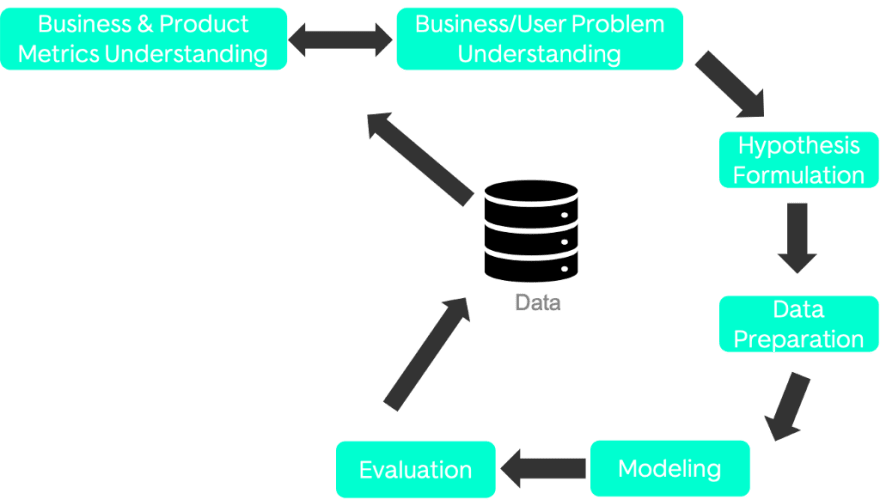
In the course of my career from a Software Engineer, Data Science Engineer, Data Landscape Engineer, Technical Product Manager, and now Product Manager, Data Science, I have built a series of failed and very successful data science projects. When I talk about successful, I mean huge business impact as measured by bottomline. See a few of my portfolio projects below:
- Saving Millions in Naira with Simple Decision Tree Classifier
- Growth Hacking with Data Science — 600% Increase in Qualified Leads with Zero Ad Budget
- Guide Your Next Property Investment in Africa with Data Science
Based on these, I can share with you what works and does not work — although I am yet to write about the one(s) that failed. As a product manager, many a time, you are informed that your company is adopting or rather developing an AI Strategy or something close. However, you wonder to yourself how this translates to improving lives for your users or its impact on your next product feature. Please be aware you are not alone. Many a product manager struggle with this as well. The problem is not you nor your company’s data scientists. The challenge is how to translate your product understanding to what data scientists understand and vice-versa.
In this short post, I share with you a framework that has worked for me over the years. What I share here are not only based on heuristics; I attended trainings such as Cloudera Data Science and recently bagged a certification from Wharton Online AI for Business course:
AI for Business was issued by Wharton Online to Olalekan Fuad Elesin.
In this post, we define a framework for Data Science and AI inclined projects. The goal of the framework is to create a repeatable execution model for DS/AI projects through shorter iterative cycles and strong focus on business/product outcomes. Following this framework, you will be guided through solving business/user problems with the scientific method, building new knowledge and data along the way. It is very important to note the following:
- Data Science problem is NOT a Machine Learning problem.
- Data Science projects DO NOT necessarily need to begin with a machine learning model.
- NOT all Data Science projects will result in a machine learning model.
Originally, solving business problems with Data Science or Artificial Intelligence started out in Statistical and Mathematical modeling techniques which are the basis of the scientific method. Furthermore, solving business problems with Statistical and Mathematical modeling techniques resulted from the inefficiencies in traditional software programs in accommodating variation in data using standard control flows, i.e “if…else” statements.
Project Framework
The framework has its foundation in the CRISP DM (Cross-industry standard process for data mining). The starting point of applying this framework to a data science/AI project is that a clear business problem , an assumption of what the outcome of solving the problem and measurable signals of the outcome are defined. Definitely, data is required as with any data project but data is not the starting point. This is because, if data is defined as the starting point, there is a possibility to confine our scope to ONLY the data believe we have available. Technologies and machine learning techniques are least to know upfront, this is in the domain of our data scientists and machine learning experts to figure out.

Problem Formulation with Framework
Having defined the individual components of the framework as outlined in the previous section, we define the smallest testable hypothesis which can be implemented within a short iteration and provides learnings in the direction of the ideal world, the defined outcome. See format and example below:
Format
We see/have .
We believe that will result in .
We will know
You can read more on Hypothesis-Driven Development in this post from ThoughtWorks.
Why?
The goal is to aim for an assumption that can be implemented and tested within a 4-week work window or less. This is mainly due to scientific nature (lots of uncertainties) of developing data science initiatives. As such, we learn faster in shorter iterations and demonstrate value quickly (or park the idea for later if data collected informs us otherwise). This way, you will figure out measurable progress rapidly, not having to wait 8 to 18 months to know the idea was not worth it — think lean.
At the completion of every work window, you should evaluate your desired outcome with defined measurable signals as checks that you are moving in the right direction.
Key Takeaways
- Focus on business/user problem not product feature
- If you don’t have an AI Strategy, ask why. If you need some guidance, let’s talk.
- Data Scientists are people, talk to them.
- Agile and Lean practices are not from Software Engineering originally. They can be adopted to Data Science as well.
I hope you found this resourceful. Kindly share your thoughts and comments — looking forward to your feedback. You can reach me via email, follow me on Twitter or connect with me on LinkedIn. Can’t wait to hear from you!!


Top comments (0)